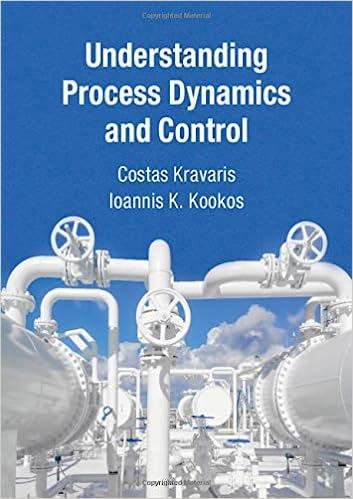Answered step by step
Verified Expert Solution
Question
1 Approved Answer
HTC: Heat Transfer Coefficient Stream data for a chemical process are given in Table 1.1. A Maximum Energy Recovery Heat Exchanger Network (MER HEN), using


HTC: Heat Transfer Coefficient
Stream data for a chemical process are given in Table 1.1. A Maximum Energy Recovery Heat Exchanger Network (MER HEN), using the Pinch Design method, is to be designed for this chemical process using a minimum approach temperature (TMIN) of 10C. The MER HEN is to be designed in three parts (above the utility pinch, above the process pinch, and below the process pinch). There are three utilities available to provide additional process heating and cooling (Table 1.2). The final developed MER HEN and its component parts (above the utility pinch, above the process pinch, and below the process pinch) are required to be validated and tested for feasibility, by comparing their features with targeted values. Task 1 (Group Task -40 marks) Using a minimum approach temperature (TMIN) of 10C, determine the overall hot utility requirement (QHmin), overall cold utility requirement (QCmin), and overall heat recovery (QREC) for the chemical process given in Table 1.1. These results should be supported by the appropriate graphical and tabular information. In addition, and making use of the utilities that are available for additional heating and cooling (Table 1.2), determine the duty of the hot oil to be provided (kW), the MP steam (kW), and the cooling water (kW). The use of two hot utilities (hot oil and MP steam) produces a utility pinch at shifted temperature of 256C. Your results need to confirm this utility pinch shifted temperature value. (Note that MP steam will be used in preference to hot oil due to its lower cost of supply). Produce a feasible, validated Maximum Energy Recovery Heat Exchanger Network (MER HEN) for the Above Utility Pinch Design region using the Pinch Design method for the chemical process (Table 1.1), using a minimum approach temperature (TMIN) of 10C. In this design region you should be using only hot oil as a utility. Stream data for a chemical process are given in Table 1.1. A Maximum Energy Recovery Heat Exchanger Network (MER HEN), using the Pinch Design method, is to be designed for this chemical process using a minimum approach temperature (TMIN) of 10C. The MER HEN is to be designed in three parts (above the utility pinch, above the process pinch, and below the process pinch). There are three utilities available to provide additional process heating and cooling (Table 1.2). The final developed MER HEN and its component parts (above the utility pinch, above the process pinch, and below the process pinch) are required to be validated and tested for feasibility, by comparing their features with targeted values. Task 1 (Group Task -40 marks) Using a minimum approach temperature (TMIN) of 10C, determine the overall hot utility requirement (QHmin), overall cold utility requirement (QCmin), and overall heat recovery (QREC) for the chemical process given in Table 1.1. These results should be supported by the appropriate graphical and tabular information. In addition, and making use of the utilities that are available for additional heating and cooling (Table 1.2), determine the duty of the hot oil to be provided (kW), the MP steam (kW), and the cooling water (kW). The use of two hot utilities (hot oil and MP steam) produces a utility pinch at shifted temperature of 256C. Your results need to confirm this utility pinch shifted temperature value. (Note that MP steam will be used in preference to hot oil due to its lower cost of supply). Produce a feasible, validated Maximum Energy Recovery Heat Exchanger Network (MER HEN) for the Above Utility Pinch Design region using the Pinch Design method for the chemical process (Table 1.1), using a minimum approach temperature (TMIN) of 10C. In this design region you should be using only hot oil as a utilityStep by Step Solution
There are 3 Steps involved in it
Step: 1

Get Instant Access to Expert-Tailored Solutions
See step-by-step solutions with expert insights and AI powered tools for academic success
Step: 2

Step: 3

Ace Your Homework with AI
Get the answers you need in no time with our AI-driven, step-by-step assistance
Get Started


